Unveiling Australia’s Edwardian Era Mother’s Day Celebrations
Introduction to Mother’s Day in the Edwardian Era: An overview of the historical context and cultural backdrop of early 1900’s Australia.
At the turn of the 20th century, Australia was a young nation still finding its identity. Having only federated in 1901, the six colonies had just united under a single national government. This period, known as the Edwardian Era (named after King Edward VII, who reigned from 1901 to 1910), was a time of optimism, social reform, and cultural consolidation, yet it was also steeped in traditional British values and a rigid social hierarchy.
Life in early 1900’s Australia was defined by a strong sense of duty, family, and community. The role of women, particularly mothers, was idealised within the framework of home and nation-building. Mothers were viewed as moral guardians, responsible for nurturing the next generation of Australian citizens—especially crucial as Australia was still deeply concerned with issues like national character, racial purity (the “White Australia Policy” had just been enacted), and loyalty to the British Empire.
Motherhood was celebrated, but largely within a sentimental and domestic ideal. Mothers were often romanticised as self-sacrificing figures whose influence extended not only within their families but symbolically across society. However, this adoration coexisted with real-world limitations: women faced restricted rights, limited career options, and often high maternal mortality rates.
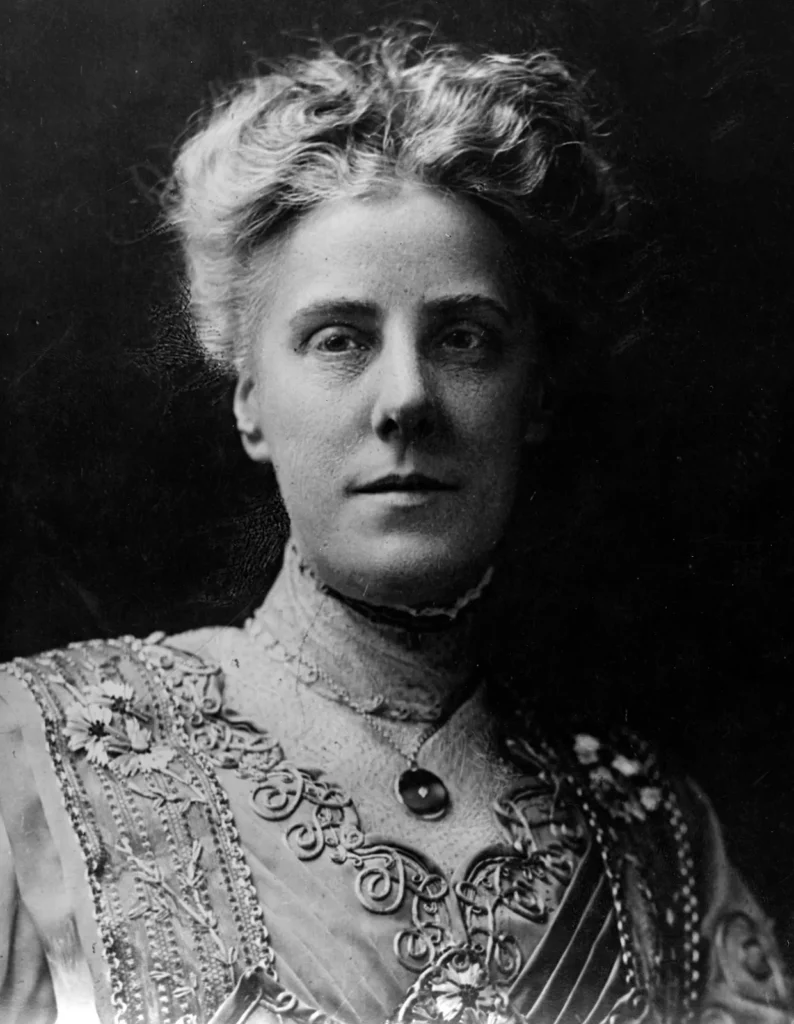
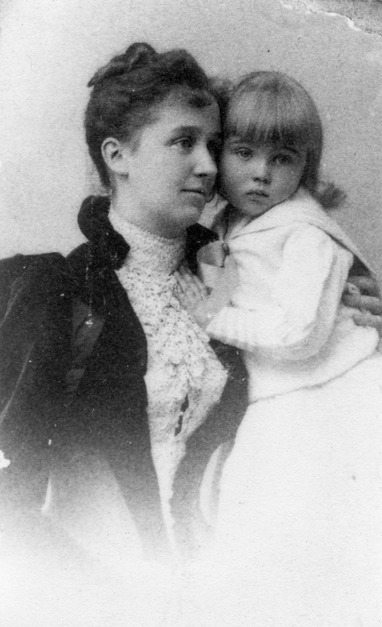
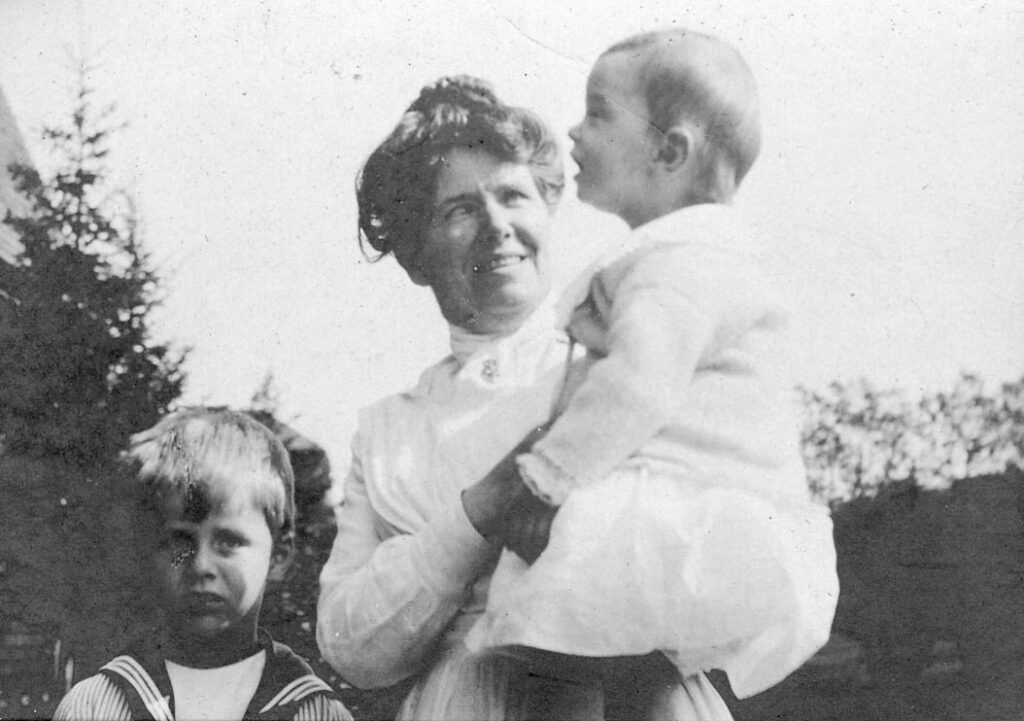
The emergence of Mother’s Day during this era reflected broader international trends. Inspired by movements in the United States by Anna Jarvis, who is widely recognized as the founder of Mother’s Day in the United States. She organized the first Mother’s Day celebration in 1908 and dedicated her life to promoting the holiday and preserving its original meaning. Australians soon embraced the idea of Mother’s Day and adopted this form of celebration.
Early celebrations focused heavily on religious and moral themes, aligning well with Edwardian values of duty, charity, and familial loyalty. Churches played a central role in promoting the day, and white flowers (especially chrysanthemums, which conveniently bloom in May in Australia) became traditional symbols of love and remembrance.
Thus, Mother’s Day in Edwardian Australia was both a heartfelt expression of personal gratitude and a reflection of the broader cultural and social ideals of the time—a fusion of private emotion and public duty, honouring the maternal role as a cornerstone of a still-developing national identity.
Influence of Anna Jarvis: Understanding how the maternal holiday began in the United States and resonated in Australia, fostering common traditions.
Anna Jarvis (an American) is widely recognized as the founder of Mother’s Day in the United States. Deeply moved by the death of her mother, Ann Reeves Jarvis—a woman who had been a peace activist and caregiver during the American Civil War—Anna sought to honor the sacrifices mothers make for their children. Her efforts culminated in 1908, when the first official Mother’s Day service was held at a church in Grafton, West Virginia.
Anna Jarvis’s vision for Mother’s Day was not commercial: she intended it to be a personal, heartfelt celebration, marked by handwritten letters and simple acts of gratitude, symbolized by the white carnation (her Mother’s favorite flower). Jarvis campaigned vigorously, writing letters and speaking publicly to promote the idea of a national holiday. Her persistence paid off when, in 1914, President Woodrow Wilson signed a proclamation establishing the second Sunday of May as Mother’s Day in the United States.
How It Resonated in Australia
The concept of Mother’s Day quickly spread beyond the United States, resonating particularly strongly in Australia. Key to its adoption there was Janet Heyden, a Sydney woman who, in 1924, began organizing celebrations for elderly mothers at a local hospital. Inspired by Anna Jarvis’s ideas, Heyden rallied community support to give gifts to lonely and forgotten Mothers. Over time, the celebration broadened across the country.
Australia, like the U.S., embraced similar traditions:
- Celebrating on the second Sunday in May – though not a traditional public holiday here.
- Gifting carnations (often white for deceased mothers, colored for living ones). Forever blooming – buy yours today.
- Honoring mothers through cards, flowers, family gatherings, and acts of appreciation. Specialty cards can be brought here.
The day became deeply embedded in both American and Australian cultures as a heartfelt tribute to motherhood, though it also gradually took on a more commercial aspect, something Anna Jarvis herself fiercely opposed and even campaigned to have it rescinded – later in life.
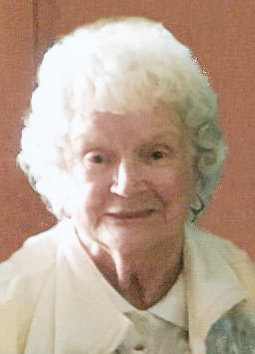
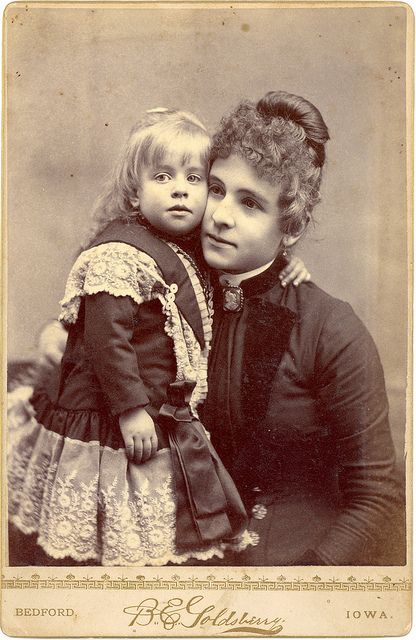
Common Traditions Fostered by This Influence
- Flowers (especially carnations) are gifted. Gorgeous imitation carnations are sold here through Etsy today.
- Handwritten notes or cards expressing gratitude. Unique and timeless cards and notes are found here online.
- Family meals or gatherings to honor Mothers. A myriad of classic cooking books to suit and taste can be purchased here today.
- Charity drives to support vulnerable Mothers and families.
- The day is seen not only as a family event, but also tied to broader social recognition of women’s contributions.
Societal Attitudes Towards Motherhood: Insight into how mothers were perceived during Edwardian times and the cultural significance bestowed upon them.
Cultural Ideal of Motherhood
During 1901-1914 – in Edwardian society, motherhood was revered as a woman’s highest calling. Women were widely seen as the moral guardians of the home, responsible not only for the upbringing of children but also for instilling social and religious values. Motherhood was idealized as a noble, self-sacrificing role — almost sacred — and mothers were expected to embody virtues like patience, modesty, duty and nurturing love.
The image of the “angel in the house” (a Victorian ideal) lingered into the Edwardian period, though it slowly began to shift as women’s social roles started to evolve.
Social Expectations and Class Differences
- Upper-Class Mothers: Wealthy women were often somewhat removed from the daily practicalities of child-rearing. They typically employed nannies, governesses, and household staff, which created a more formal relationship between mother and child. Nonetheless, their role was still vital in shaping their children’s social standing and moral education.
- Working-Class Mothers: In contrast, working-class women faced harsh realities. They often had to work outside the home (in factories, domestic service, or other roles) while also caring for their families. Despite economic struggles, they were expected to maintain a respectable home life, which was increasingly seen as a reflection of personal virtue and respectability.
Motherhood and National Duty
Motherhood in Edwardian Britain was not just a private matter; it was tied to the strength of the Empire. Mothers were viewed as essential to producing healthy, moral, and patriotic citizens. There was anxiety over declining birth rates among the middle and upper classes, and campaigns were launched to promote motherhood as a duty to the nation — an idea sometimes called “maternal patriotism.”
This view was particularly sharpened by concerns over imperial decline and military readiness, especially following the Boer War (1899–1902), where British soldiers’ poor health was attributed to inadequate maternal care and impoverished early life.
Medicalization of Motherhood
The Edwardian period also saw the beginning of the medicalization of pregnancy and childbirth. Doctors and public health officials increasingly involved themselves in childbirth practices, infant care, and maternal health. Mothers were encouraged to follow medical advice to ensure they raised “scientifically healthy” children.
This shift subtly altered perceptions of motherhood from a purely natural, intuitive process to something requiring expert supervision and discipline.
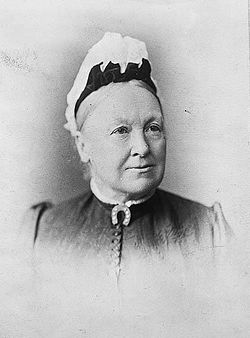
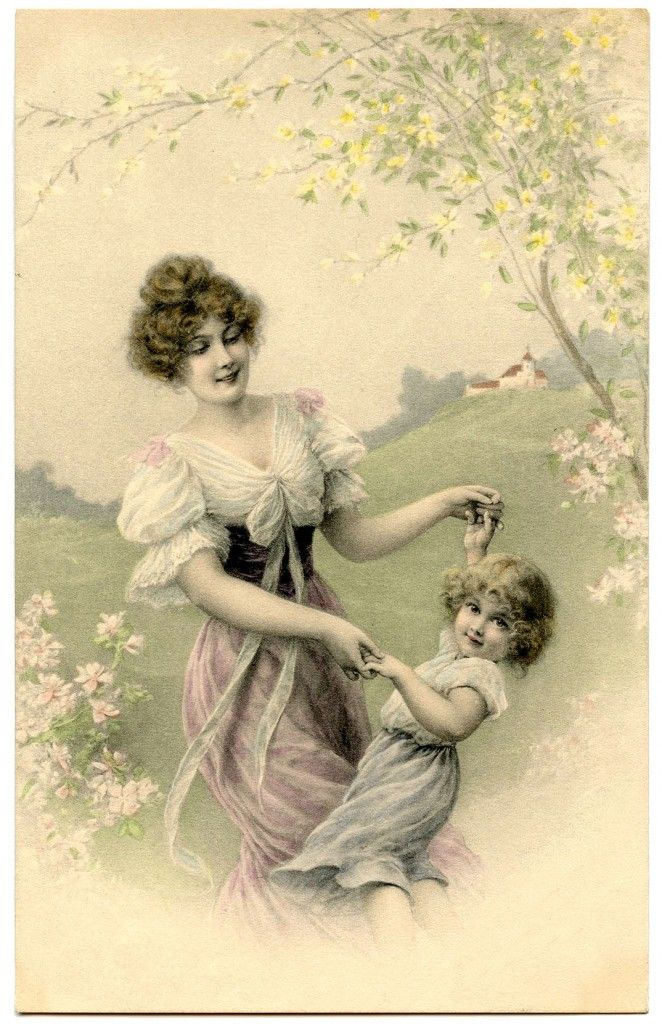
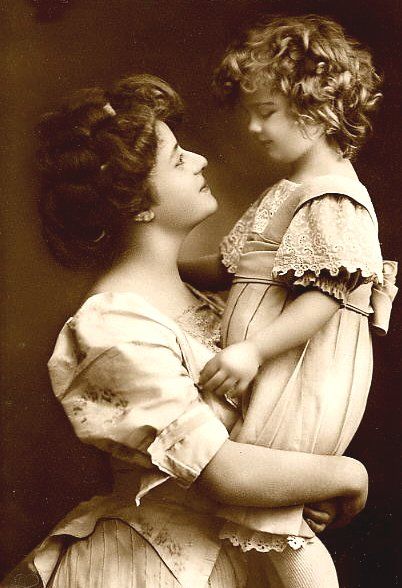
Changing Narratives: Early Feminism
Although traditional ideals remained dominant, early feminist movements began to question the restrictive roles assigned to women. Some activists, such as those in the suffrage movement, argued that motherhood should not preclude women from participating in public life. They emphasized that women’s experiences as Mothers uniquely qualified them to influence politics and society — particularly in areas like education, health, and welfare.
Thus, while the Edwardian mother was still primarily defined by her domestic role, new conversations about women’s rights and identities were starting to challenge and broaden that role.
Summary
Motherhood in the Edwardian era was a culturally exalted yet socially controlled role. Mothers were honored as the heart of the home and the moral backbone of the nation, yet they operated under strict societal expectations, especially regarding class and morality. Even as this reverence persisted, early feminist ideas began to plant the seeds for a broader and more complex understanding of what it meant to be a mother — and a woman — in modern society.
Celebratory Customs and Practices: Exploration of family gatherings, gifting traditions, and church services that marked the day.
Celebratory Customs and Practices
Celebrations are often the heart of cultural and religious life, and specific customs surrounding family, gifting, and religious observances offer deep insight into a community’s values and traditions.
Family Gatherings
Family has traditionally been central to major celebrations. Special days often began with the gathering of extended family members under one roof or in a familiar ancestral home. These gatherings typically involved:
- Shared Meals: Large feasts with dishes reserved for special occasions (such as roast meats, special breads, or seasonal vegetables) were common. Recipes often passed down through generations symbolized heritage and unity. Recipe book and recipe folders are sought here at Etsy online.
- Storytelling and Remembrance: Elders frequently shared family stories, recounting both joyful and challenging times, connecting younger generations to their roots. Story telling journals are sold online – find your special one here.
- Games and Activities: Traditional games, music, and dance played an important role, creating a festive atmosphere and reinforcing bonds among relatives. Fun and exciting Mothers Day song or trivia games can be located here at Etsy.
Gifting Traditions
Gift-giving has long been an expression of love, goodwill, and religious devotion during celebratory occasions. Customs included:
- Handmade Gifts: Before the era of mass production, gifts were often handmade — knitted garments, woodcrafts, or home-baked goods, emphasizing personal effort and affection. Cute and original knitted gifts are sold today through Etsy online. Woodcrafts – a – plenty online at Etsy today.
- Symbolic Gifts: Some gifts carried religious or cultural symbolism, such as crosses, prayer books, or items representing prosperity and protection. Assorted symbolic symbols can be found here through Amazon. Many prayer books are also sourced here online.
- Gift Exchanges: In some traditions, gifts were exchanged after a communal meal or special church service, signifying gratitude and the blessings of fellowship.
Church Services
Religious observances were often the spiritual anchor of the day. Church services marked the occasion with solemnity and joy:
- Special Liturgies: Services included special hymns, prayers, and sermons themed around gratitude, renewal, and community. Different hymn books can be found here at Amazon today.
- Processions and Decorations: Churches were often decorated with seasonal flowers, candles, and symbolic items like wreaths or banners, creating an atmosphere of reverence and celebration. Symbolic wreaths or candles are purchased through Amazon here.
- Sacramental Rites: Celebrations might coincide with rites like baptisms, confirmations, or communion, tying personal milestones to communal worship.
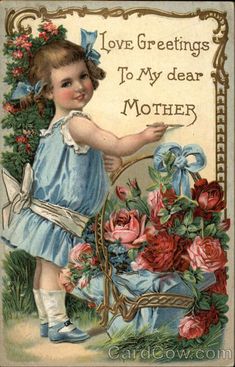
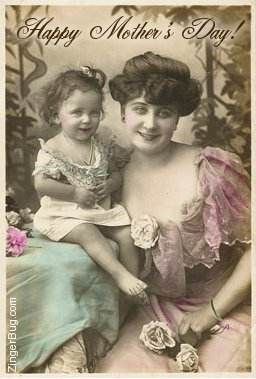
Summary:
Family gatherings, gifting traditions, and church services created a rich tapestry of celebration, balancing joyous human connection with spiritual reflection. These customs ensured that celebratory days were not just festive but deeply meaningful, grounding individuals in their families, communities, and faith.
Media and Literature Reflections: How newspapers and literature of the time portrayed and celebrated mothers on their special day
Media and Literature Reflections on Mothers’ Day
Introduction
Mother’s Day, as a recognized celebration, gained traction in the early 20th century, and the media and literature of the time played a crucial role in shaping and promoting the holiday’s meaning. Newspapers, magazines, poems, and stories became key tools for honoring mothers, reinforcing cultural ideals of motherhood, and encouraging public participation in the holiday.
Newspapers and Periodicals
Newspapers often portrayed Mother’s Day as a solemn yet joyous occasion, emphasizing gratitude, moral duty, and the sacred role of mothers in society. Editorials would often call on readers to express appreciation, either through letters, visits, or public ceremonies.
- Advertisements: Commercial influence grew quickly, with ads for flowers, greeting cards, and gifts becoming prominent. However, early newspaper ads still tended to frame these items as heartfelt tokens rather than purely commercial transactions.
- Articles and Essays: Many articles reflected on the history of motherhood, sometimes including biblical or historical references to the noble sacrifice of Mothers. Stories about community events, church services, and local tributes to Mothers were frequent around the holiday.
As an affiliate - I may receive a small commission when you click on a link and purchase through this post
Literature and Poetry
Writers celebrated mothers as paragons of virtue, patience, and selflessness. Literature of the era often cast Mothers as the emotional and moral center of the home.
- Poetry: Poems published in periodicals and anthologies often used sentimental imagery—flowers, home, hearth—to evoke strong emotional responses. Famous poets and local writers alike contributed to a growing body of Mother’s Day-themed verse. Many poem books are located online at Amazon – learn more here.
- Short Stories: Fiction during the early Mother’s Day movements frequently included narratives about family reunions, moral lessons learned from maternal advice, or stories highlighting a mother’s quiet sacrifice. Historical or journal type books on Mothers Day located here online.
- Books and Children’s Literature: Children’s books around this time sometimes dedicated sections to praising mothers, encouraging young readers to admire and obey their mothers. Kids books are found here online – find your perfect Mothers Day literature now.
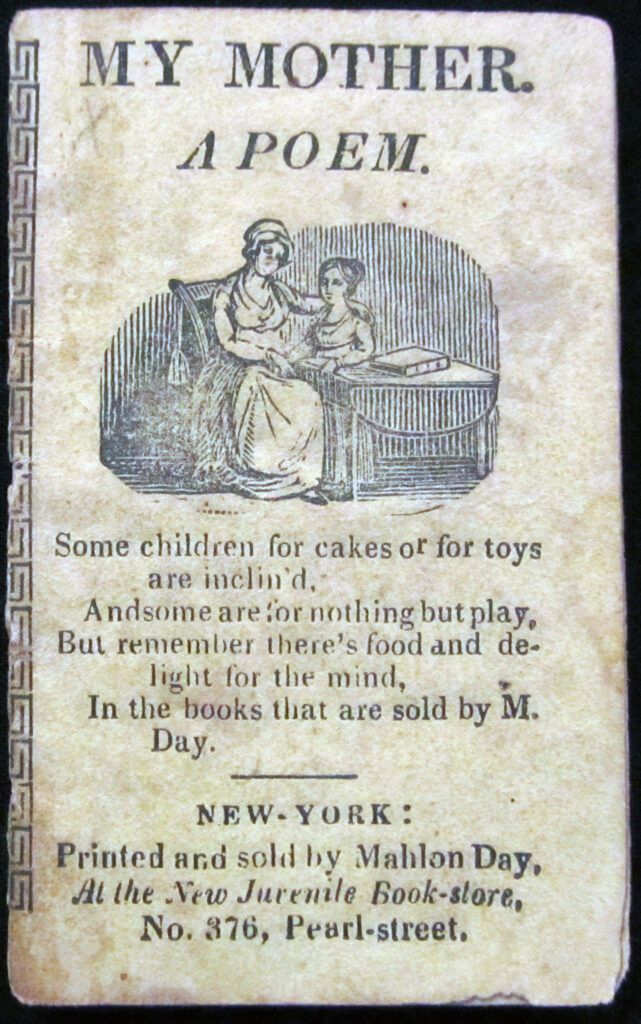
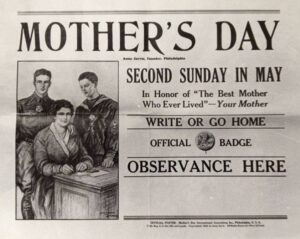
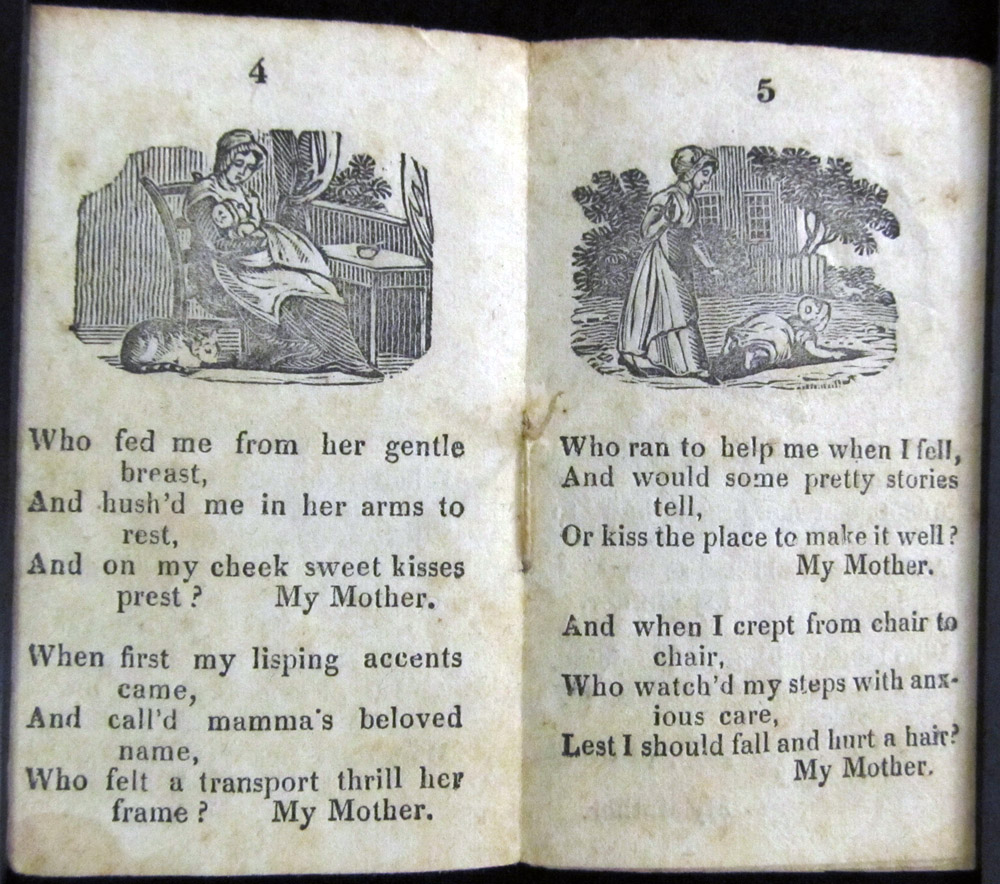
Cultural Ideals Reflected
Media and literature mirrored and reinforced the idealized view of motherhood prevalent in early 20th-century Western society:
- Mothers were depicted as nurturers, moral guides, and pillars of home stability.
- There was a strong emphasis on self-sacrifice, unconditional love, and domestic devotion.
- Literature and media rarely acknowledged the complexities or difficulties of motherhood, instead presenting an almost saintly, idealized image.
Conclusion
In the early days of Mother’s Day, newspapers and literature were instrumental in establishing the emotional and cultural weight of the holiday. By highlighting virtues associated with motherhood and encouraging expressions of affection and reverence, media and literature not only celebrated mothers but also helped shape broader societal expectations around family, gender roles, and emotional expression.
The Role of Schools and Communities: Initiatives taken by schools and local community groups to honor mothers, reflecting the social dynamics of the era.
In the early to mid-20th century, schools and local community groups played a significant role in institutionalizing the celebration of mothers, particularly around Mother’s Day. These initiatives not only honored individual mothers but also reflected broader social dynamics, including evolving gender roles, community cohesion, and national identity.
School-Based Initiatives
Schools were pivotal in promoting the celebration of Mother’s Day and honoring maternal figures. Teachers organized activities that were both educational and emotionally resonant:
- Mother’s Day Programs and Performances: Schools often held special assemblies or pageants where children performed poems, songs, or skits dedicated to their Mothers. These events reinforced traditional family values and taught children to express gratitude and affection publicly.
- Craft Projects: Students frequently created handmade gifts—cards, paper flowers, or simple crafts—to present to their Mothers. This activity emphasized the value of personal effort and sentiment over materialism, aligning with the era’s ideals of modesty and familial devotion.
- Educational Lessons on Family Values: Curriculum around this time often incorporated lessons on the importance of family, with a focus on the Mother’s role as the moral and emotional center of the household. This helped to socialize young people into traditional gender expectations.
Community Group Initiatives
Local organizations, such as churches, women’s clubs, and civic groups, also embraced Mother’s Day as an opportunity to strengthen community bonds:
- Church Services: Religious institutions frequently held special Mother’s Day services, highlighting the spiritual dimension of motherhood and reinforcing the role of women as moral guides in both family and community life.
- Community Dinners and Socials: In many towns, civic organizations hosted communal meals or teas in honor of mothers, creating a public space to acknowledge their contributions. These gatherings served to foster a sense of collective appreciation and belonging.
- Charitable Drives: Some communities linked Mother’s Day celebrations to charitable initiatives, such as fundraising for maternal health services or supporting widowed Mothers, blending celebration with civic duty.
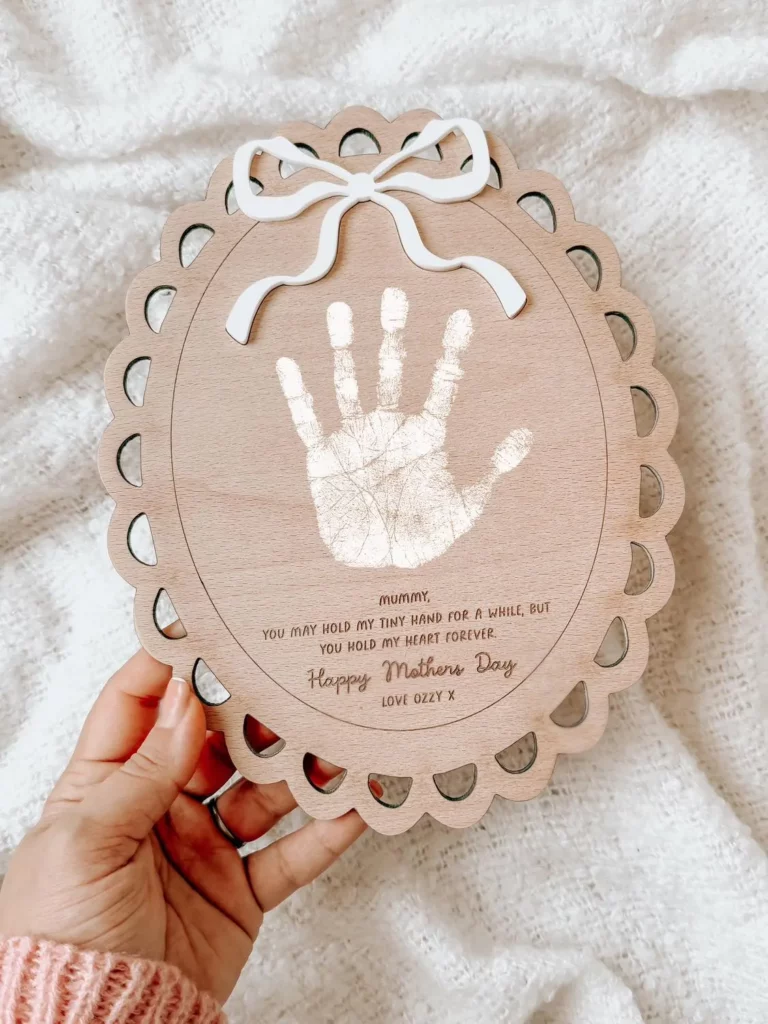

Reflection of Social Dynamics
The ways in which schools and communities honored Mothers revealed much about the society of the time:
- Idealization of Motherhood: The initiatives often idealized the maternal role, portraying Mothers as selfless, nurturing figures essential to social stability. This reflected a broader cultural emphasis on domesticity, especially post-World War II.
- Gender Norms: These celebrations reinforced traditional gender roles, with mothers being celebrated primarily for their caregiving and homemaking, while Fathers were often absent from similar public accolades.
- Community Identity: Honoring Mothers was also a way for communities to assert shared values and cultural identity, particularly in a rapidly changing society marked by urbanization and technological advancements.
- Emerging Social Movements: By mid-century, as feminist movements gained traction, some critiques began to emerge about the one-dimensional portrayal of Motherhood. However, in local settings, traditional celebrations remained dominant well into the later 20th century.

I hope you enjoyed the post on this very special day that honours Mothers everywhere.
With kindness,
Helen
https://www.facebook.com/vintageclothesandaccessoriesaustralia
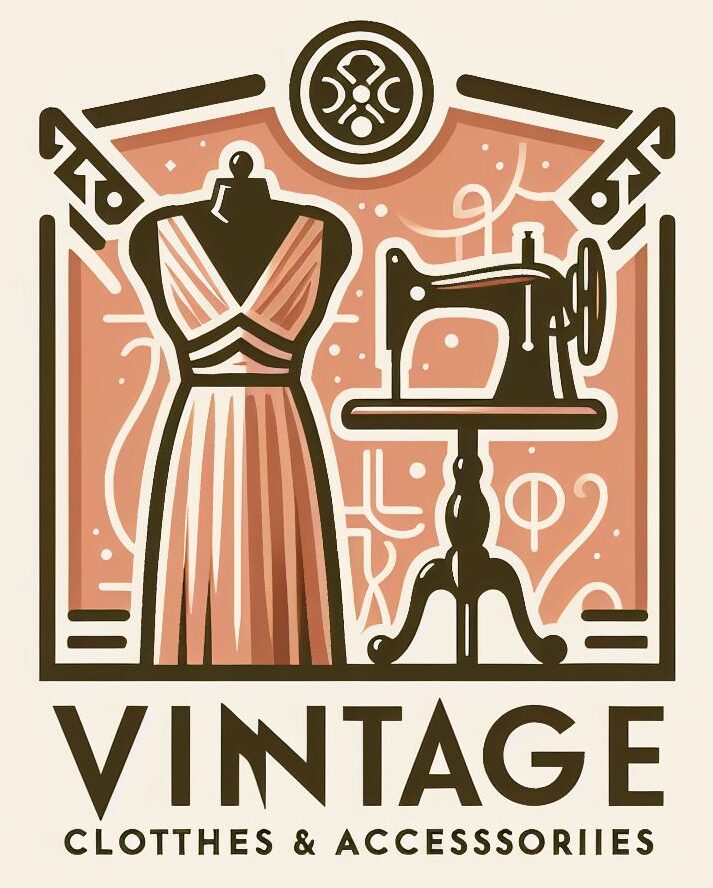
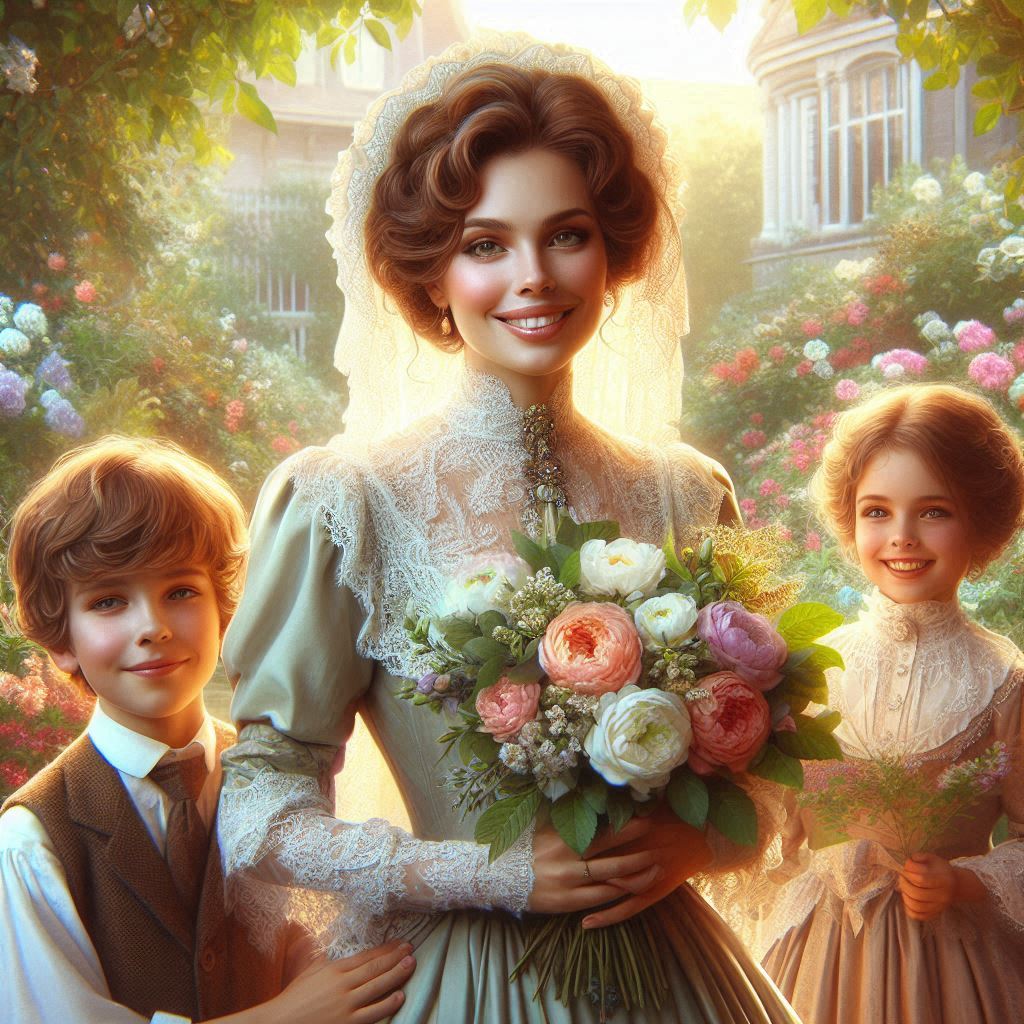
This article offers such a rich and insightful look into the origins of Mother’s Day in Australia. I had no idea that the tradition began in 1924, thanks to Janet Heyden’s compassionate initiative to bring joy to elderly mothers in hospitals during a time of great loss after World War I. It’s fascinating to learn how this personal act of kindness blossomed into a national observance. The connection between early 20th-century values and the celebration of motherhood adds a profound layer to our understanding of the holiday’s significance. Thank you for shedding light on this important piece of Australian history. It’s a reminder of how small acts of kindness can lead to meaningful traditions that endure through generations.
Thanks Sophie, I really appreciate your comments.
Regards Helen.
I really enjoyed reading this! It’s fascinating to see how early 1900s Australia shaped Mother’s Day into both a personal and national celebration. I love the idea that the original focus was on heartfelt gratitude rather than gifts — it feels so much more meaningful. It’s a shame how commercialised the day has become in modern times. Do you think there’s still a way to bring back more of that original spirit today? Maybe we should promote the sentiment behind the day as this story tells us.
Hi Lesley,
Yes I agree with you. However in this day and age it is very hard to “go back” to how things were.
Event advertising is a huge multi million dollar conglomerate worldwide and to stop that would be near impossible. But certainly individual groups or communities could rally around and promote the idea within, but there would have to be a lot of like-minded people involved to make it worthwhile. Perhaps starting with schools and church communities?
Regards Helen